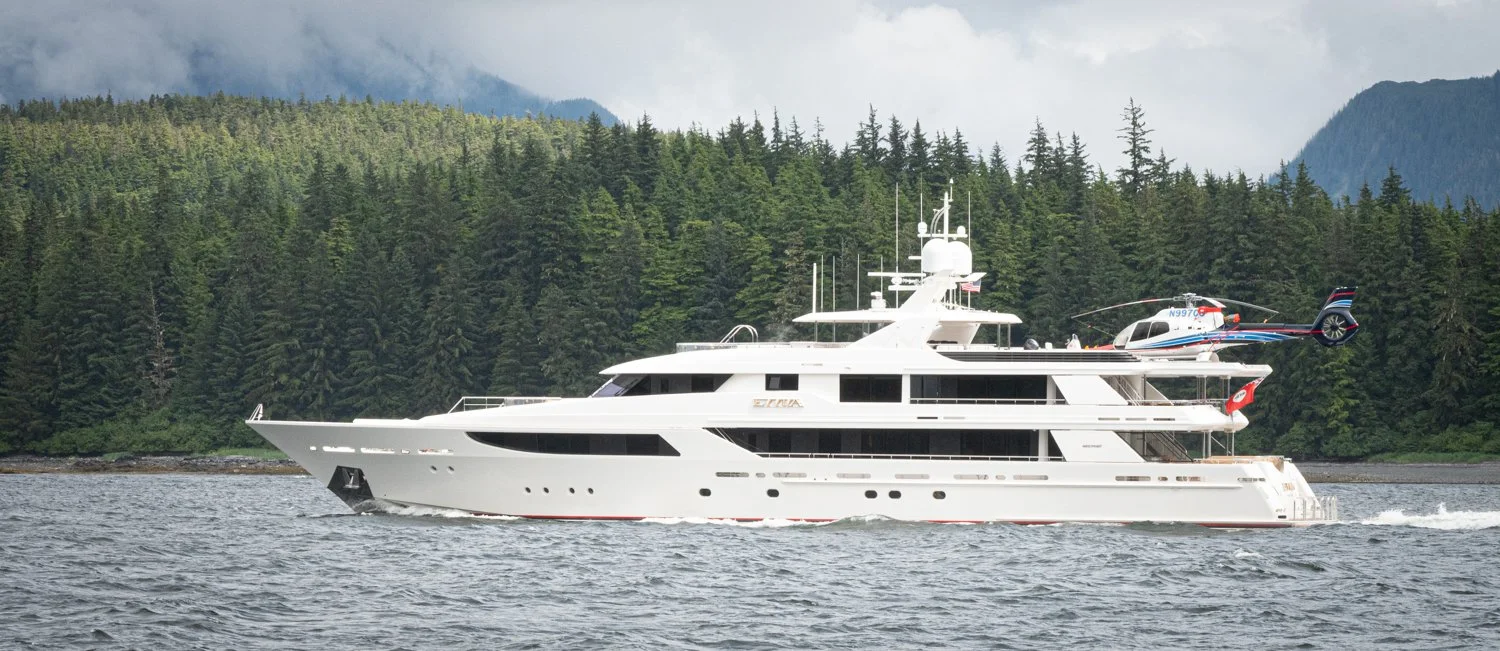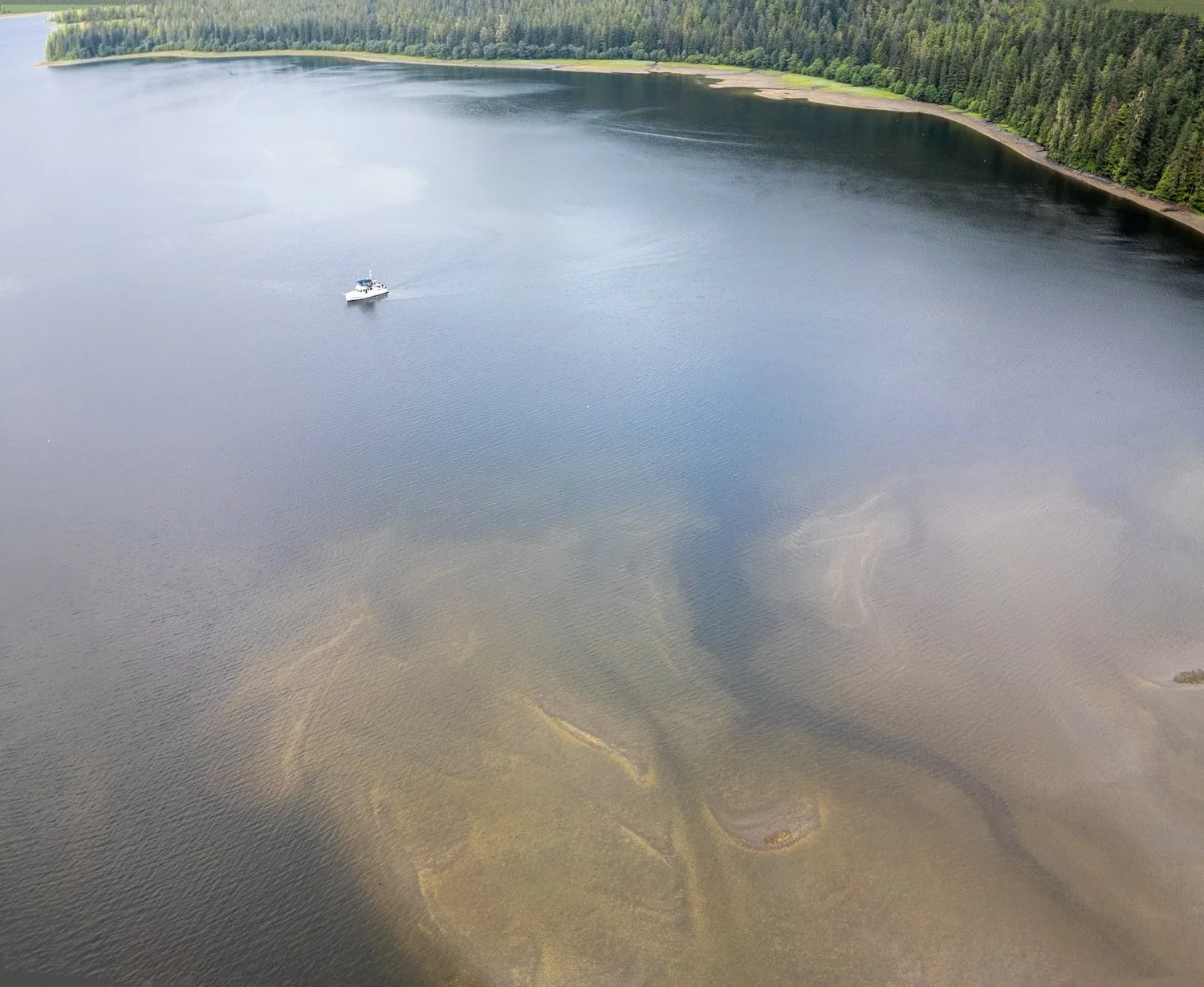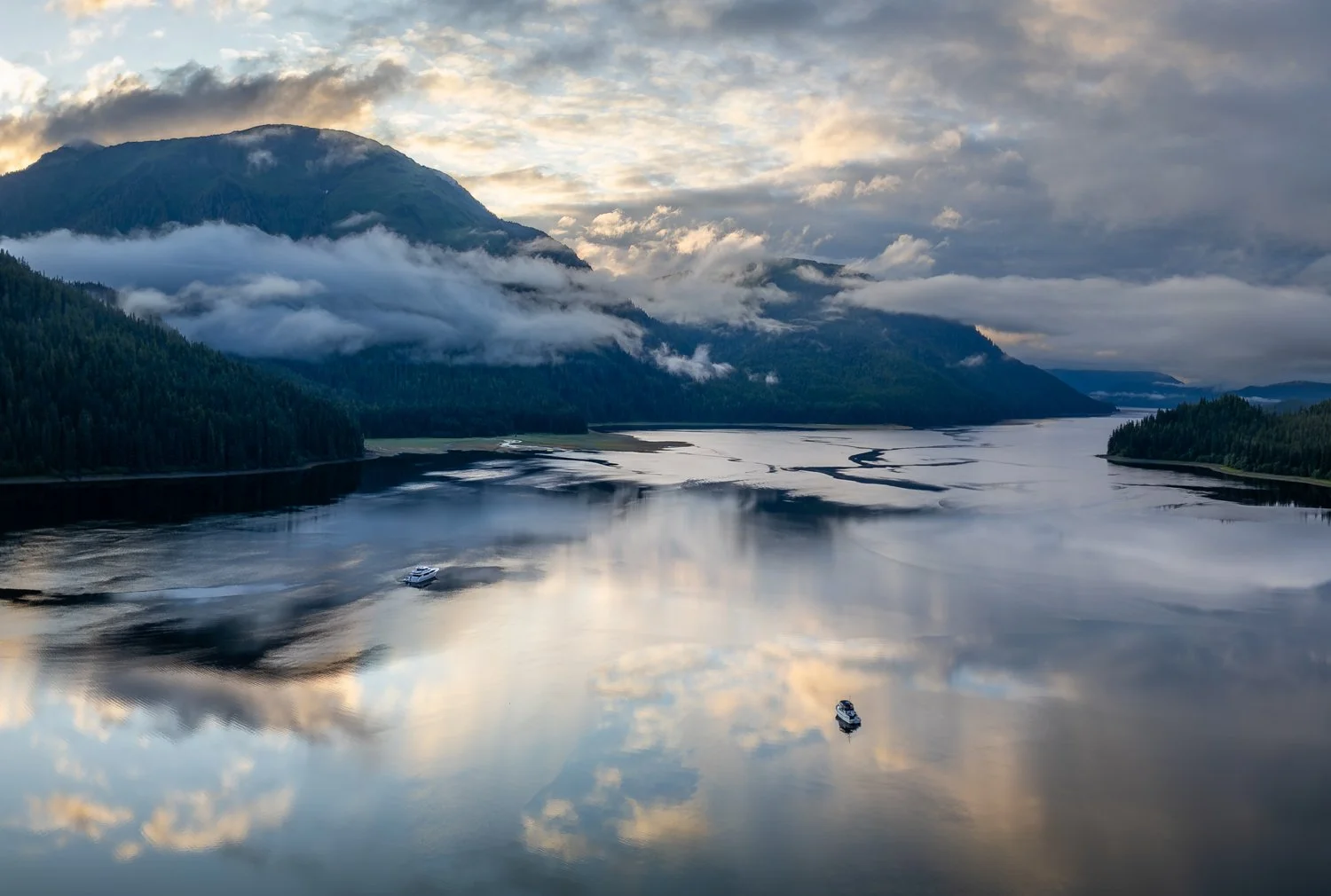Windfall Harbor to Tracy Arm Cove
/We woke to a dreary forecast and decided we’d rather face the weather underway than sit through another soggy lay day. With southeast winds and seas predicted under two feet in Stephens Passage, we aimed for Tracy Arm Cove—our jumping-off point to see the glaciers.
The most fog we have seen so far
M/v evviva, a 163 foot westport with helicopter, passed us as we departed windfall harbor
Seymour Canal gave us a proper Alaskan sendoff: 25–30 knot headwinds and a current running with the wind made for a choppy ride and the occasional blast of green water over the windshield. Not terrible, but definitely not dry.
As we rounded Point Hugh, the ride turned sporty. Swells hit us broadside, and OceanFlyer gave us a lean that felt like 45 degrees (though we know it wasn’t quite that dramatic). Still, anything not battened down went flying.
Despite the conditions, Point Hugh delivered what we came for— whales. A humpback mother and calf surfaced right across our bow, forcing a brief pause. Later, an orca breached nearby, and the pod cruised by. No photos this time — too wet, too rolly — but the memory sticks.
Crossing Stephens Passage, we adjusted course to smooth out the ride in the confused following seas. Entering Tracy Arm was easy with slack water and well-marked buoys. We know from past experience how fast the current can run here—those markers lean hard during full ebb or flood.
We anchored on the west side of the cove, hoping the shallow shoals would block any rogue icebergs. One boat was already on the east side, and three more joined them later, probably seeking shelter from the forecasted southeast wind. Spoiler alert: the cove offers little protection from that direction.
The afternoon brought a parade of squalls. One hit 50 knots, kicking up a full field of whitecaps. Definitely our roughest day since leaving Bellingham—but still nothing to complain about.
Evening settled in with shifting clouds, bursts of rain, and calming winds. By nightfall, OceanFlyer was quiet and still, ready for tomorrow’s adventure up Tracy Arm.

















